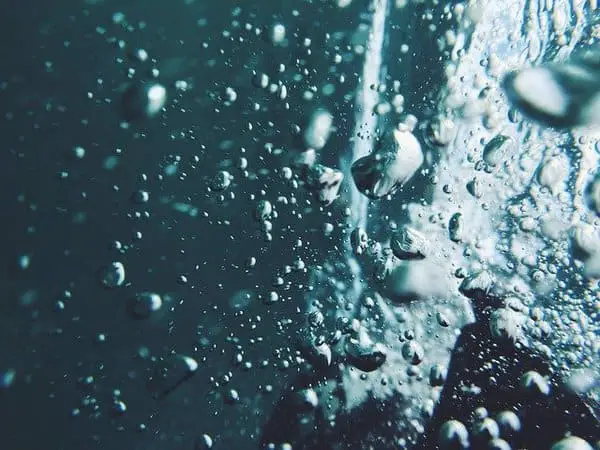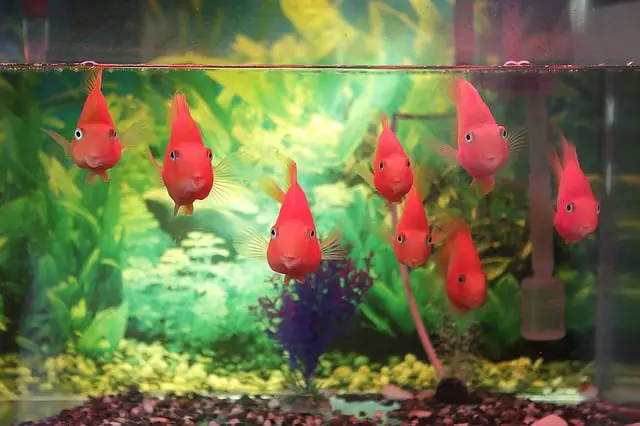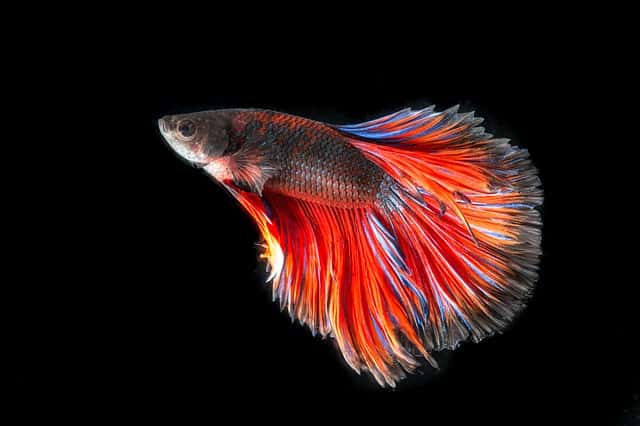As you may (or may not) know, aquarium fish and plants need oxygen to survive. Aerating the aquatic environment is key to maintaining good water quality in freshwater tanks, but what about saltwater tanks? Do they need air bubbles?
An aeration system should be installed in a saltwater aquarium, unless you have a small or shallow tank. If you use a protein skimmer, you won’t need to add air bubbles to the tank as skimmers add air to the water. Be wary, however, of salt creep which occurs when the salt in the water builds up along the top of the tank and corrodes metal equipment such as light fixtures, power plugs, and hose clamps.
Now that you know most saltwater aquariums need air bubbles, lets take a closer look at this subject. I’ll explain why you need to aerate a saltwater tank, how to fix an existing aeration system, and whether a protein skimmer helps oxygenate water. I’ll also discuss ways to prevent and eliminate salt creep.
So, if you’re ready to learn more about the pros and cons of aerating your saltwater aquarium, then let’s get started!
Do You Need to Aerate a Saltwater Tank?
Like most living organisms, fish and aquatic plants need oxygen to survive. Regardless of whether you have a freshwater, saltwater, or brackish tank, aerating the water is vital to the health and safety of its habitants. Therefore, you should invest in an air stone or protein skimmer for your saltwater aquarium.
Be careful, however, not to over-aerate a saltwater tank. Many marine fish as well as live corals don’t do well in an aquatic environment with too many air bubbles. Gas embolisms (which appear as unsightly bumps or lumps under the skin) are also more likely to appear on fish in a tank with too much aeration.
Why You Would Want Air Bubbles in a Saltwater Tank?
Air bubbles in a saltwater tank help with the exchange of oxygen and other gases by moving the water up towards the surface. Should the unthinkable happen and you lose power to circulation pumps and/or protein skimmer, the air stone would help keep the dissolved oxygen levels from dropping too low.
What Happens When There’s Low Oxygen in a Saltwater Tank?
The lower the concentration of dissolved oxygen in a saltwater tank, the greater the stress to its inhabitants. Dissolved oxygen levels in an aquarium should hold steady at 5 to 7 ppm. Once levels drop below 1 or 2 ppm, the risk of death is imminent for fish.
Telltale signs that there’s not enough oxygen in your saltwater tank include fish floating along the surface of the water while frequently opening and closing their mouths or hanging out near the back of the tank near the filter outlet. If you notice either of these behaviors, then it’s time to test the water!

How Do You Oxygenate a Saltwater Tank?
To oxygenate a saltwater tank both effectively and safely, you should consider investing in the following aquarium equipment:
Protein Skimmer
While the main purpose of a protein skimmer is to help remove organic waste, it also helps oxygenate the water by infusing it with air. As a result, you end up with a cleaner, clearer, well-aerated tank that’s safer for fish.
Air Pump or Stone
An air stone that’s attached to an air pump outside of an aquarium works to effectively oxygenate the environment by creating micro air bubbles that gradually envelop the tank. It also increases circulation near the surface of the water!
Aquarium Cooling Fan
A cooling water fan helps increase surface agitation, which (in turn) works to oxygenate the aquatic environment This device attaches to the glass on the side of your tank and promotes gas exchange near the surface.
What are the Pros and Cons of an Air Stone in a Saltwater Tank?
The advantages of installing an air stone in your saltwater tank include the following:
- increasing the effectiveness of other equipment such as filters, pumps, and protein skimmers
- providing better oxygenation and gas exchange for tanks with solid covers or tightly fit hoods
- moving water vertically (not just horizontally) towards to surface for increased aeration
- providing an inexpensive yet effective way to improve oxygenation and gas exchange
- creating a wall of bubbles that’s both appealing and soothing to watch
The disadvantages of using an air stone in a saltwater aquarium include the following:
- not being as efficient on its own as a water pump or protein skimmer, for example
- not moving water fast enough or at an adequate volume on its own to improve water circulation
- contributing to increased water spray near the surface which can then lead to salt creep
- clogging up and wearing out fairly quickly, resulting in the need to be replaced more often
- giving off irregular or insufficient air flow should the hoses get pinched or kinked
To increase the effectiveness of an air stone in a saltwater tank, be sure to put it at the bottom near the substrate and away for any live corals. Never bury it in the gravel as this will stir up the waste material and negatively affect the water quality. Placing an air stone along the back of the tank is recommended.
Can There be Too Much Oxygen in a Fish Tank?
Whether you know it or not, there is such a thing as too much oxygen in your fish tank. Over-aerated water in an aquarium can lead to potentially dangerous gas bubble disease. This occurs when fish are exposed to excessive gases, which then results in bubbles forming around their eyes, gills, and fins.
How Do You Get Rid of Air Bubbles in a Saltwater Tank?
If you feel you have too many micro air bubbles in your saltwater aquarium, it could be the result of insufficient water flow through the filtration chamber. To fix the problem, remove your filtration system, take it apart, put it back together again, and then reinstall it in your tank.
If the problem persists, it could be a sign of air trapped in the sponge filter. To remedy this issue, simply compress the sponge with your hand while underwater. Do this for as long as it takes until no bubbles are released.
Carbon media could also be the cause of too many bubbles in a saltwater aquarium. It’s important to note that it’s perfectly normal for new carbon media to release a lot of air bubbles into the tank, which should stop naturally after a few days.
Does a Protein Skimmer Aerate?
Protein skimmers do indeed aerate a saltwater aquarium. They work to remove organic compounds such as proteins and amino acids from food particles, decaying plant matter, and fish waste from the water. By injecting air bubbles into the water, they help oxygenate the tank environment as well.
Check out the following protein skimmer available online through Amazon.
How Do You Get Rid of Salt Creep in an Aquarium?
Removing salt creep from an aquarium is easy. Simply wet a towel with fresh water (use RO water, if possible) and wipe the salt creep away! You can also use vinegar to remove excessive salt build-up and other mineral deposits from tap water.
To prevent salt creep, it’s important to wipe it away regularly. If you don’t, the build-up will be much harder to remove. As well, try to keep the water level up to just above the rim of the tank. This helps reduce etching of the aquarium glass.
Does Salt Creep Lower Salinity?
Since salt creep is basically dried-up saltwater that collects and leaves behind a residue along aquarium surfaces, it can increase salinity levels in the tank. To prevent this from affecting the water’s pH, make sure to top up your tank regularly with treated tap or RO water.
Conclusion
To conclude, an aeration system should be installed in your saltwater aquarium. Air bubbles oxygenate the water, which helps keep the aquatic environment safe for fish, plants, and other creatures in the tank. The only time you may not need an air stone or pump is if you have a small or shallow tank.
I hope this article has answered your questions regarding the importance of aerating a saltwater tank. Thanks for reading and good luck with your aquarium hobby.
Related Posts
Can a Fish Tank have too much Oxygen?
Do Saltwater Tanks Need a Protein Skimmer?
Surface Skimmer VS Protein Skimmer – What’s the Difference?
Why is My Saltwater Tank Cloudy?






